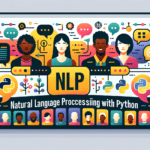Prompt engineering, a core component of AI interaction, is the art and science of designing specific inputs to enhance the responses of language models like GPT-3.5 and GPT-4. Engineers can refine outputs, tailor responses, and expand model applications by shaping prompts. However, prompt engineering has its challenges. The field requires a deep understanding of language and model behavior, where even minor adjustments can yield vastly different results. This blog explores the key challenges and opportunities in prompt engineering, shedding light on the careful balance required to optimize language model performance.
Challenges in Prompt Engineering
Ambiguity in Language
Natural language could be more explicit, leading to potential misunderstandings in model responses. A single phrase can carry multiple meanings, which may be interpreted differently depending on context. This ambiguity challenges prompt engineers to craft precise and clear instructions. For example, a prompt like “Tell me about Paris” could produce outputs ranging from details about Paris, France, to an overview of Paris Hilton. Mitigating ambiguity requires prompt engineers to define terms carefully and consider possible interpretations.
Context Sensitivity
Language models rely heavily on context, often producing vastly different responses based on slight variations in wording. For instance, “What are the benefits of AI?” versus “How can AI benefit society?” could lead to varied outputs even though the queries seem similar. This context sensitivity complicates prompt design, as engineers must anticipate how changes in tone or phrasing affect responses. A model’s context interpretation can shift, requiring engineers to experiment and fine-tune prompts for each specific application.
Bias and Ethical Considerations
Language models are trained on vast datasets that include societal biases, meaning prompts can inadvertently reinforce stereotypes or produce biased content. Avoiding these biases while encouraging fair, ethical, and unbiased responses is an ongoing challenge. Engineers must be mindful of the moral implications of prompts, avoiding language that could lead to harmful or prejudiced outputs. Addressing bias requires a proactive approach in designing prompts and, when possible, leveraging model settings that minimize the risk of generating biased content.
Complexity of Tasks
Specific prompts demand sophisticated reasoning, a nuanced understanding of complex topics, or a detailed analysis, all of which can be challenging to encapsulate in a single prompt. For instance, asking a model to explain a philosophical concept in simple terms requires balancing clarity with depth. Engineers must consider how to simplify complex requests without sacrificing accuracy or relevance in the response.
Model Limitations
Language models have inherent limitations in reasoning, factual knowledge, and interpretive skills. For example, they may need help understanding events after their training cutoff or more profound insight into niche topics. Prompt engineers must grasp a model’s capabilities and limitations to avoid overloading it with tasks beyond its scope, ensuring prompts are realistic and achievable.
Iterative Process
Crafting an effective prompt is often an iterative process involving repeated adjustments. Engineers must evaluate the model’s output, refine the prompt, and reassess results, usually multiple times. This process can be time-consuming and labor-intensive, particularly for projects requiring specific accuracy or sensitivity. Engineers need patience and creativity to navigate this iterative cycle, making prompt refinement a challenging but essential aspect of optimizing model performance.
Opportunities in Prompt Engineering
Enhanced Model Performance
A well-crafted prompt can dramatically improve a model’s performance, providing more transparent, accurate, and relevant responses. Effective prompts act as guides, helping language models navigate complex queries or focus on specific details. For instance, specifying “in one paragraph” at the end of a prompt can yield a concise response, allowing for enhanced relevance and accuracy that might be absent in a generic query.
Custom Applications
Prompt engineering allows developers to customize model behavior for specialized applications, such as customer support, content creation, and educational tools. This customization unlocks tailored responses that fit the unique needs of each application. For example, a business could use specific prompts for AI-driven customer support, ensuring accurate responses align with brand values. Tailoring prompts for unique use cases brings versatility, enabling organizations to deploy language models across varied industries.
Interdisciplinary Collaboration
The field of prompt engineering benefits significantly from interdisciplinary collaboration. Experts in linguistics, psychology, and user experience design can work together to enhance prompt design. This collaborative approach can yield more innovative, intuitive prompts that resonate with users across cultural and linguistic backgrounds. Interdisciplinary input helps prompt engineers to create prompts that are both effective and considerate of human communication nuances.
User-Centric Design
Prompt engineering offers the opportunity to design prompts that prioritize user needs, creating intuitive interactions with language models. Engineers can refine prompts to improve user experience by focusing on user feedback and ensuring helpful and relevant responses. A user-centric approach can result in prompts that adapt to user preferences, making interactions with AI more seamless and enjoyable.
Exploration of New Capabilities
As language models evolve, prompt engineering opens doors to exploring new capabilities, allowing users to test the boundaries of what models can accomplish. For example, as models become better at understanding emotions or nuanced instructions, prompt engineers can experiment with more complex prompts, discovering previously untapped functionalities. This exploration can lead to innovative uses, driving advancements in our interactions with AI.
Automation and Efficiency
Automating prompt generation and testing can streamline workflows, reducing the time required for model fine-tuning. By using automation tools and refining prompt structures, prompt engineers can more efficiently test and deploy models across applications. This opportunity is particularly beneficial for companies aiming to integrate AI on a larger scale, where prompt engineering efficiencies translate to reduced operational costs and faster deployment times.
Best Practices for Effective Prompt Engineering
Navigating the challenges and maximizing the opportunities in prompt engineering requires adherence to best practices fo prompt engineering. Below are some strategies to optimize prompt design:
- Define Clear Objectives: Understanding what you want to achieve before crafting a prompt. Clarifying objectives ensures prompts are aligned with the desired outcome.
- Keep It Simple: Avoid complex language and keep prompts concise. A simple, straightforward prompt often yields more accurate and manageable outputs.
- Experiment and Iterate: Test various prompt formats and iterate based on the model’s responses. Fine-tuning prompts through experimentation helps refine output quality.
- Address Bias Proactively: Choose words that minimize the risk of biased outputs. This proactive approach is crucial in maintaining ethical standards in AI interactions.
- Incorporate User Feedback: Prompt design is an evolving process, and incorporating user feedback can highlight areas for improvement, enhancing the overall user experience.
Conclusion
Prompt engineering presents both exciting opportunities and complex challenges. While engineers must navigate ambiguity, context sensitivity, and ethical considerations, they also have the chance to enhance model performance, customize applications, and improve user interactions. Through interdisciplinary collaboration, a user-centric approach, and automation, prompt engineering can push the boundaries of what language models can achieve. As the field continues to grow, ongoing research, experimentation, and ethical considerations will be essential in refining prompts to unlock the full potential of language models.
The journey of prompt engineering is dynamic, requiring adaptability and creativity to address new challenges and seize emerging opportunities. In this evolving landscape, prompt engineering stands as a pivotal skill, enhancing our ability to communicate with, control, and harness the power of AI.



